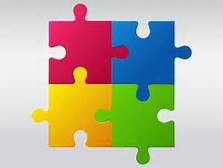The NNAT (Naglieri Nonverbal Abilities Test) and NNAT3 (Naglieri Nonverbal Abilities Test, Second Edition) are assessments frequently utilized by schools to determine a child’s eligibility for enrollment in gifted and talented programs. These programs often have limited spots available, and competition can be high. So, it’s essential to start preparing your child well in advance, preferably two to four months ahead of the test date.
Preparation involves developing the nonverbal skills necessary for success on these tests, including spatial reasoning, pattern recognition, and sequence identification. By starting early, your child has ample time to become familiar with these skills and gain confidence in their abilities, which can significantly improve their performance on test day.
Additionally, a gradual and consistent preparation approach is more effective than cramming or last-minute studying. It allows your child to build a strong foundation in these skills, making them better equipped to handle the test’s challenges and achieve a higher score.
In summary, early preparation for the NNAT and NNAT3 tests is vital because it gives your child the time to develop the essential nonverbal abilities required for gifted program eligibility and increases their chances of success in a competitive testing environment.
Both NNAT versions are nonverbal, focusing on spatial reasoning, pattern recognition, and sequence identification. We strongly recommend daily play of our engaging online games, tailored to enhance these essential skills. This consistent practice will effectively prepare your child for the test.
- Pattern Puzzlers
- Pattern Tile Galaxy
- Planet Pattern Tiles
- Pattern Blast!
- IQ Fun Tree
- Digital Tutor
Both tests use only two colors, blue and yellow, but our practice questions on the site display in full color to engage and excite children during test preparation.
To view a sample of our interactive questions, sign up for our 100 free practice questions:
3 Tips to Make NNAT Prep Fun





